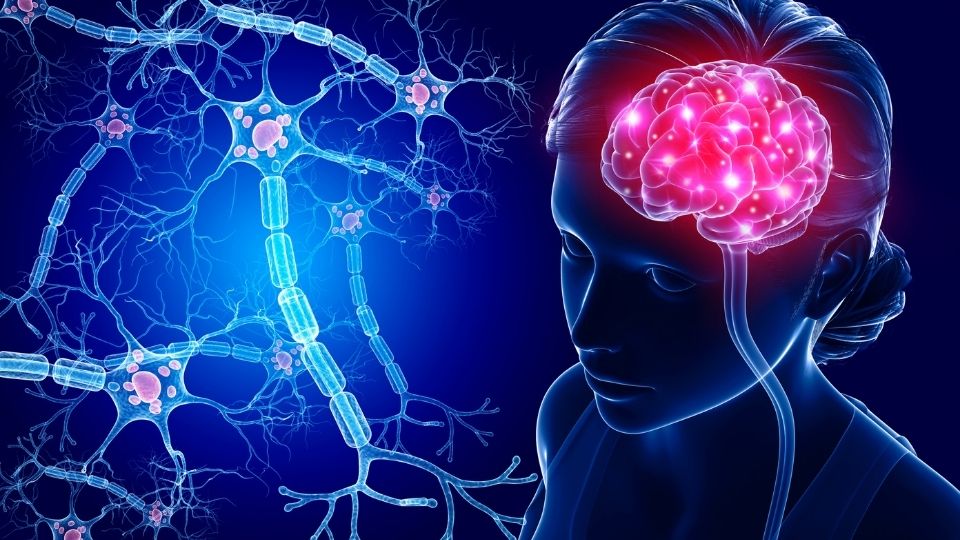Is Alzheimer's Disease and Dementia the Same Things Clarifying Types and Symptoms of Dementia

What is dementia?
Dementia is not a term that refers to just one disease (Alzheimer’s Association, 2016). The term dementia is a label for a number of symptoms related to the loss of cognitive (brain) function. Symptoms include a decline in memory or other thinking and problem-solving skills, being confused about time and place, for example not knowing what year it is, or how you arrived somewhere, and changes in mood or personality. Even though there are multiple pathways to dementia and it is fairly common in older people, especially people over age 85 (Harada, Natelson Love, & Triebel, 2013), it is not considered a normal part of the aging process.
What causes dementia?
Dementia symptoms can be caused by a variety of diseases including Alzheimer’s disease, vascular problems, and other conditions, some of which are described below (NINDS, 2015). It is also possible to have multiple forms of dementia, such as Alzheimer’s disease and vascular dementia at the same time. Different forms of dementia will affect the severity and progression of dementia symptoms.
Alzheimer’s disease
Alzheimer’s disease is the most common form of dementia as it consists of 60 to 80 percent of cases (Alzheimer’s Association, 2016). To better understand what this disease is you may need a little background on how the brain functions. The cells in the brain are called nerve cells, or neurons. In Alzheimer’s disease, changes occur in the brain that damage and destroy nerve cells and prevent the nerve cells from sending signals to each other. Scientists have found that beta-amyloid protein deposits (called plaques) build up between the nerve cells, and tau protein fibers start to twist and “tangle” inside the nerve cell. Experts believe that these plaques and tangles ultimately cause the cells to stop working. As a result, the cells die and the brain shrinks in size. Memory failure, personality changes, and other problems with daily activities are a direct result of the cell damage that occurs during this disease process (Buckner, 2004).
Vascular dementia
The second most common cause of dementia symptoms is vascular dementia. The vascular system refers to your heart and all of the vessels (arteries, veins, capillaries, and so on) that supply your body with blood. Your brain needs a lot of blood because blood carries oxygen and nutrients to feed the brain cells. Vascular dementia can occur as a result of atherosclerosis—a condition where a sticky plaque begins to build up inside arterial walls, making blood flow difficult and increasing the risk of clotting and potential for arterial blockage. Atherosclerosis can affect any artery in the body, but vascular dementia is specifically related to a reduction or blockage of blood flow in the carotid arteries. These arteries are located on each side of your neck and they are responsible for supplying oxygen-rich blood to your brain. A large block in these arteries, or a burst in blood vessels to the brain, can lead to a stroke. However, when damage is less severe, occurring in smaller amounts that accumulate damage over time, a person may begin to experience symptoms of vascular dementia (Khan, Kalaria, Corbett, & Ballard, 2016).
Dementia with Lewy Bodies and Parkinson’s Dementia
Dementia with Lewy bodies and Parkinson’s disease dementia are fairly similar conditions (Walker, Possin, Boeve, & Aarsland, 2015). In both conditions, a specific protein (alpha-synuclein) begins to deposit inside the brain cells. This is not the same protein deposit, or the same process of plaques and tangles, that occurs in Alzheimer’s disease. Lewy body dementia is diagnosed when dementia symptoms occur without a previous diagnosis of Parkinson’s disease, or when dementia symptoms arise within 12 months of Parkinson’s disease. When dementia symptoms arise at least 1 year after the diagnosis of Parkinson’s disease, a diagnosis of Parkinson’s dementia is typically given (McKeith & Mosimann, 2004). Not everyone with Parkinson’s disease gets dementia. About 60% of people with Parkinson’s disease never develop Parkinson’s dementia (Emre, 2003).
Frontotemporal dementia (FTD)
One of the most common types of early-onset (before age 65) dementia is frontotemporal dementia (Rosness, Engedal, & Chemali, 2016). The brain has different areas, called lobes, and FTD starts in the frontal lobe (behind your forehead) or temporal lobes (behind your ears). Two different types of proteins can build up in the brain cells of these two lobes (Rosness et al., 2016). Just like in other dementias, the damage to these cells accumulates over time, and because the damage is occurring in the frontal or temporal lobes, the person will experience problems in language, behavior, personality, and movement (Snowden, Neary, & Mann, 2002). The majority of those with FTD will begin having symptoms between the ages of 50 and 60, although it can be difficult to correctly diagnose this condition (Rosness et al., 2016).
Summary: “So what is it? Dementia? Or Alzheimer’s?”
Because most people with dementia have the Alzheimer’s type, doctors, researchers, and family members will often use the two terms interchangeably. If a doctor diagnoses your spouse with Alzheimer’s disease, you could say “My spouse has dementia” and/or “My spouse has Alzheimer’s disease.” Both of these statements would be correct because Alzheimer’s is a type of dementia.
However, if a doctor diagnosed your spouse with dementia with Lewy bodies, you would not call it Alzheimer’s disease. You might say, “My spouse has dementia with Lewy bodies. It is a form of dementia similar to Alzheimer’s disease, but it affects the brain differently causing unique symptoms that are not typical of Alzheimer’s disease.” Receiving a medical evaluation for dementia and gaining a proper diagnosis can help you and your family better understand the disease process and what to expect in the way of additional symptoms and behavior. Such knowledge can help you better prepare for the future and maximize quality of life.
References
- Alzheimer’s Association. (2016). Basics of Alzheimer’s disease [Brochure]. n.p.: Alzheimer’s Association.
- Buckner, R. L. (2004). Memory and executive function in aging and AD: Multiple factors that cause decline and reserve factors that compensate. Neuron, 44, 195-208. doi:10.1016/j.neuron.2004.09.006
- Emre, M. (2003). Dementia associated with Parkinson's disease. The Lancet Neurology, 2(4), 229-237.
- Harada, C. N., Natelson Love, M. C., & Triebel, K. (2013). Normal cognitive aging. Clinical Geriatric Medicine, 29(4), 737-752. doi:10.1016/j.cger.2013.07002
- Khan, A., Kalaria, R. N., Corbett, A., & Ballard, C. (2016). Update on vascular dementia. Journal of Geriatric Psychiatry and Neurology, 29(5), 281-301. doi:10.1177/0891988716654987
- National Institute of Neurological Disorders and Stroke (NINDS). (2015, November 2). NINDS Dementia Information Page. Retrieved from http://www.ninds.nih.gov/disorders/dementi as/dementia.htm
- McKeith, I. G., & Mosimann, U. P. (2004). Dementia with Lewy bodies and Parkinson's disease. Parkinsonism and Related Disorders, 10(Suppl 1), S15-8.
- Rosness, T. A., Engedal, K., & Chemali, Z. (2016). Frontotemporal dementia: An updated clinician’s guide. Journal of Geriatric Psychiatry and Neurology, 29(5), 271-280. doi:10.1177/0891988716654986
- Snowden, J. S., Neary, D., & Mann, D. M. A. (2002). Frontotemporal dementia. British Journal of Psychiatry, 180, 140-143. doi:10.1192/bjp.180.2.140
- Walker, Z., Possin, K. L., Boeve, B. F., & Aarsland, D. (2015). Lewy body dementias. The Lancet, 386(10004), 1683-1697. doi:10.1016/S0140-6736(15)00462-6
Authors
Elizabeth B. Fauth, Maria C. Norton, and Jessica J. Weyerman
Related Research


 Utah 4-H & Youth
Utah 4-H & Youth





